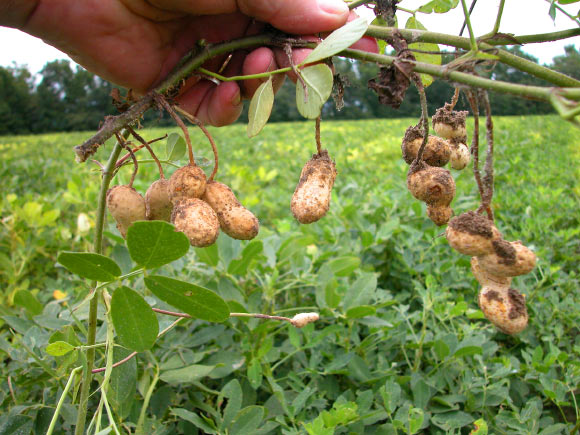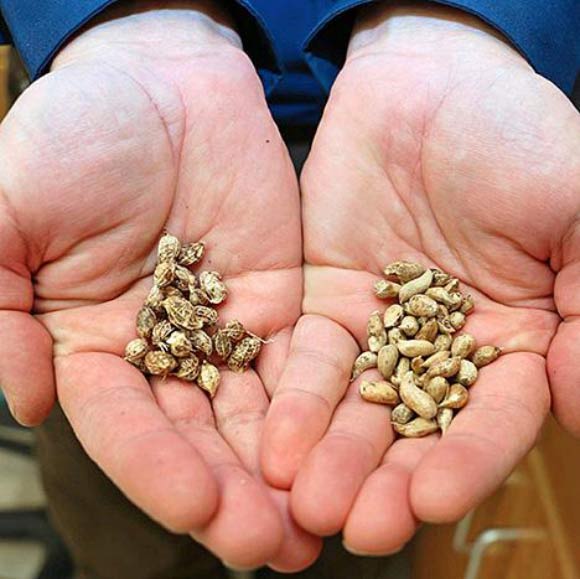An international team of scientists has produced the high-quality genomic sequence for the cultivated peanut (Arachis hypogaea), an important grain legume and oilseed crop with an annual production of about 44 million tons.

Leaves and freshly dug pods of Arachis hypogaea, Stuckey, South Carolina. Image credit: Dave, aka Pollinator / CC BY-SA 3.0.
Like many other crops, the cultivated peanut is of hybrid origin and has a polyploid genome that contains essentially complete sets of chromosomes from two ancestral species: Arachis duranensis and A. ipaensis.
Its story began several thousand years ago in South America, where A. duranensis and A. ipaensis genomes merged in a rare genetic event.
The result is a complex genomic blend that’s nearly as big as the human genome, which is about 3 billion base pairs.
Initially, University of Georgia scientist David Bertioli and colleagues sequenced the genomes of A. duranensis and A. ipaensis separately, using DNA taken from the two species rather than from cultivated peanut. This made it easier to identify structural features of the genomes and the genes residing on them. The researchers reported the progress in the journal Nature Genetics in 2016.
Now, using advanced DNA sequencing equipment, the team has sequenced the two merged genomes in a single commercially grown peanut, namely ‘Tifrunner,’ filling in knowledge gaps that the previous effort missed.
This latest advance generated interesting leads, including the geographic origin of A. duranensis — a region in northern Argentina known as Rio Seco.
“Ancient farmers migrating there from Bolivia exposed A. duranensis to A. ipaensis plants,” Dr. Bertioli and co-authors said.
The scientists also recreated this genomic merger by crossing the two ancient species and analyzing the results in seven generations of offspring plants.
This revealed an interesting pattern of DNA swapping and deletions (eliminations) taking place in the offspring plants that likely explains the diverse seed size, shape, color and other traits seen in commercial peanuts today.
The DNA swapping is unusual in that it occurs between the two ‘subgenomes’ of the two contributing wild species — something that’s possible due to their high similarity.
The results were published in the journal Nature Genetics.
_____
David J. Bertioli et al. The genome sequence of segmental allotetraploid peanut Arachis hypogaea. Nature Genetics, published online May 1, 2019; doi: 10.1038/s41588-019-0405-z








